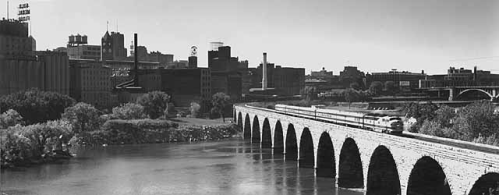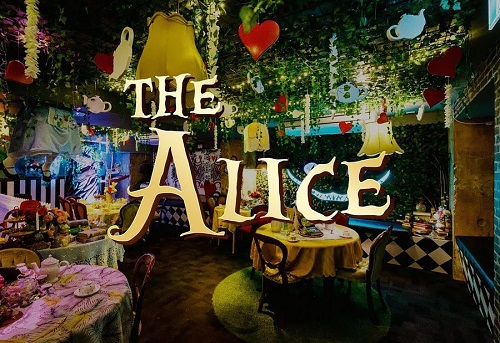Why Euripides Remains Important Today – A Discussion with Director Marcela Lorca
 Saturday, August 13, 2022 at 2:10AM |
Saturday, August 13, 2022 at 2:10AM |  Becky Fillinger |
Becky Fillinger | Article by Becky Fillinger, photos supplied
 Marcela LorcaEuripides’ Iphigenia at Aulis will have a short run in the Twin Cities – this is another event not to dawdle on – tickets go on sale August 15. We spoke to the play’s director and theater superstar, Marcela Lorca, about the universal scope of the play, the all star cast and crew and what is on the horizon for Ten Thousand Things Theater Company.
Marcela LorcaEuripides’ Iphigenia at Aulis will have a short run in the Twin Cities – this is another event not to dawdle on – tickets go on sale August 15. We spoke to the play’s director and theater superstar, Marcela Lorca, about the universal scope of the play, the all star cast and crew and what is on the horizon for Ten Thousand Things Theater Company.
Q: Euripides’ Iphigenia at Aulis has been performed since 405 BC where it won first place at the Dionysia competition in Athens. Many people will glance at the author and title of the play and assume there is no modern significance in the play. What is your response to get folks to take a second look at the current relevance of this classic Greek tragedy? Why did Ten Thousand Things Theater Company choose to produce it now?
A: This remains one of the most moving plays ever written. At the center of the story are the fate of a girl in the midst of impending war, who has to struggle with the duty to country versus the duty to family, and the sacrifices and difficult decisions that are made to save others. In a parallel yet contemporary bow to the origins of Greek theater, our production is rooted in ritual, movement, and song. With original music composition by J.D. Steele, movement contributions by Brian Bose and Darrius Strong, and visuals by Sarah Bahr and Rachel Breen, ours is a current interpretation of this timeless classic play. As in the play, our current times are complex, politics are divisive, and big conflicts loom in the distance, which demands extraordinary actions from citizens. Now more than ever we need inspiration from great works of art that are universal in their scope.

Q: Brian Vinero writes of Euripides, “His surviving works paint a portrait of a man dissatisfied with politics, war and dismissive attitudes toward women in Athenian society.” Will we experience evidence of his dissatisfactions in this production?
A: There is no question that women had limited rights in Ancient Greece, and poignantly it feels like the gains that women have made in recent history are ever more vulnerable today. I feel that Euripides is exploring the intersection of intimate human relations and the politics of a nation on the brink of war. He does this with great nuance and balance. There are no villains, just divergent points of view and impossible circumstances driven by history and politics. He reminds us of the great importance of listening and debate in civil society.
 The cast
The cast
Q: You have an amazing all-star acting and musical direction cast. What was the recruitment process for this play? Who committed first to the project?
A: This is the fourth time that J.D. Steele and I have worked on a Greek play together. We have a unique form of collaboration and one that we keep refining. There’s great emotional power and theatricality in the chorus’ work. We’re also inviting community choirs to join us, as we want the experience to be inclusive and open to others who want to participate. In terms of assembling the cast, I started by inviting Regina Williams, Steve Epp, and Sally Wingert as they are actors I’ve worked with previously and greatly admire. Then we did call backs in order to assemble a cast that could play characters and be part of the singing chorus. Everyone is amazing.
Q: Ten Thousand Things Theater Company performs in many non-traditional theater spaces - homeless shelters, correctional facilities, low-income senior centers, after-school programs and women’s shelters. Where is the theater bringing Ighigenia at Aulis?
A: Due to measures put in place by Actors’ Equity Association, we aren't able to tour to our community partners. In addition, some of our community partners are restricting access due to health conditions. We are instead offering video recordings to our community partners and also engaging with them via Ten Thousand Voices. We are hopeful we can begin touring with Mlima's Tale. In the meantime, we have three outdoor and one indoor location for audiences to see Iphigenia at Aulis.
Q: How do we purchase tickets for this play?
A: Tickets for Iphigenia at Aulis go on sale August 15 at www.tenthousandthings.org. Tickets are pay-what-you-can pricing, with suggested $35.
Dates and locations are:
A: In November, Michelle O’Neill will direct Ten Thousand Voices: WATER, a live event featuring select writing from community partners read and performed by some of Minnesota’s finest actors. Performances are November 17–20 at Westminster Presbyterian Church.
 Ten Thousand Things Theater Company returns to Open Book and one other location to be announced from February 10 to March 12, 2023 for Mlima’s Tale by Lynn Nottage. Ansa Akyea will make his Ten Thousand Things Theater Company directing debut, with a cast that includes Brian Bose. We learn that elephants may become extinct in as few as 20 years because of poaching for their ivory in this compelling play by the Pulitzer Prize-winning playwright of Ruined and Sweat. Inspired by a magazine article about wild elephants illegally hunted by contract poachers who smuggle their ivory tusks out of Africa for profit, Mlima's Tale is an enthralling piece of theater told in a daringly original way.
Ten Thousand Things Theater Company returns to Open Book and one other location to be announced from February 10 to March 12, 2023 for Mlima’s Tale by Lynn Nottage. Ansa Akyea will make his Ten Thousand Things Theater Company directing debut, with a cast that includes Brian Bose. We learn that elephants may become extinct in as few as 20 years because of poaching for their ivory in this compelling play by the Pulitzer Prize-winning playwright of Ruined and Sweat. Inspired by a magazine article about wild elephants illegally hunted by contract poachers who smuggle their ivory tusks out of Africa for profit, Mlima's Tale is an enthralling piece of theater told in a daringly original way.
 The season concludes April 28–June 11, 2023 with Emilia by Morgan Lloyd Malcolm. I direct this show based on the real life of the 16th century English poet Emilia Bassano, with a cast that includes Sun Mee Chomet. With the notion that she may have been the 'Dark Lady' of Shakespeare's sonnets, the play tells the fictional story of Bassano’s relationship with him, her tremendous skill as a writer, and her determination to thrive and uplift women's voices at a time laws were designed to restrict women's rights. With an all-female cast, the play bursts with passion, music, and humor as it reveals the life of a poet, mother, and feminist.
The season concludes April 28–June 11, 2023 with Emilia by Morgan Lloyd Malcolm. I direct this show based on the real life of the 16th century English poet Emilia Bassano, with a cast that includes Sun Mee Chomet. With the notion that she may have been the 'Dark Lady' of Shakespeare's sonnets, the play tells the fictional story of Bassano’s relationship with him, her tremendous skill as a writer, and her determination to thrive and uplift women's voices at a time laws were designed to restrict women's rights. With an all-female cast, the play bursts with passion, music, and humor as it reveals the life of a poet, mother, and feminist.
 Q: How may we follow the theater’s news?
Q: How may we follow the theater’s news?
A: Many ways!
Check out our website: www.tenthousandthings.org
Facebook: https://www.facebook.com/Ten-Thousand-Things-13201236885
Instagram: https://www.instagram.com/ttttheater
YouTube: https://www.youtube.com/user/TTTMpls/playlists (view our offerings of TTT Let's Sing! and Ten Thousand Voices 2021)
Vimeo: https://vimeo.com/672081627/9c378cb940 (for Ten Thousand Voices 2022)


































































































